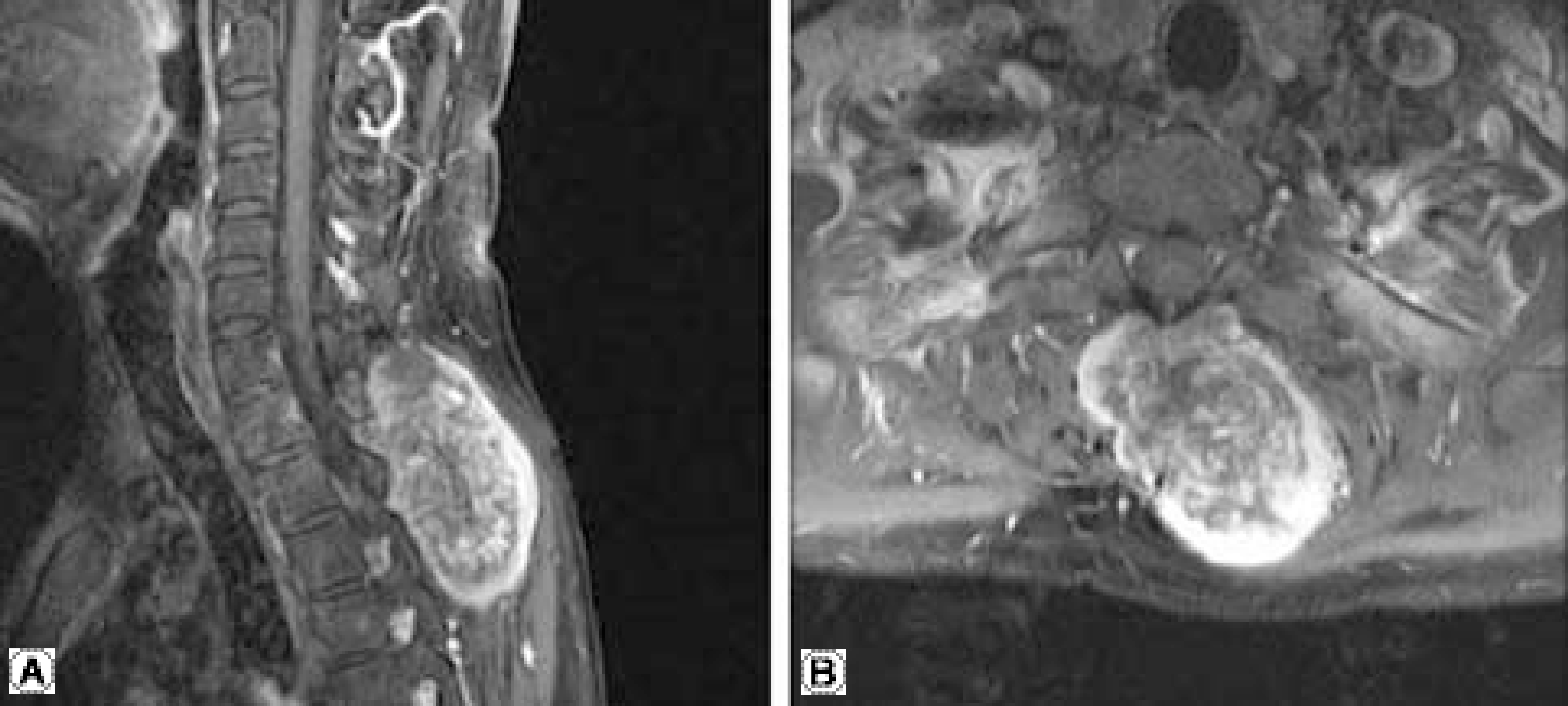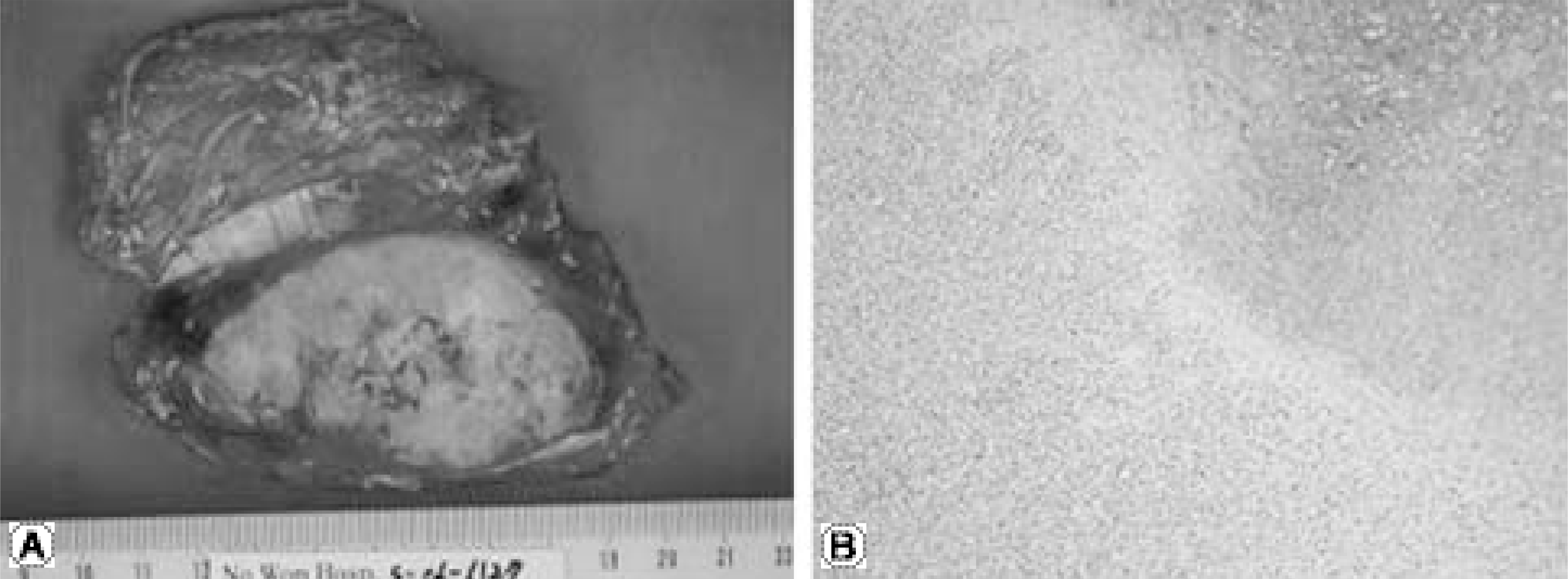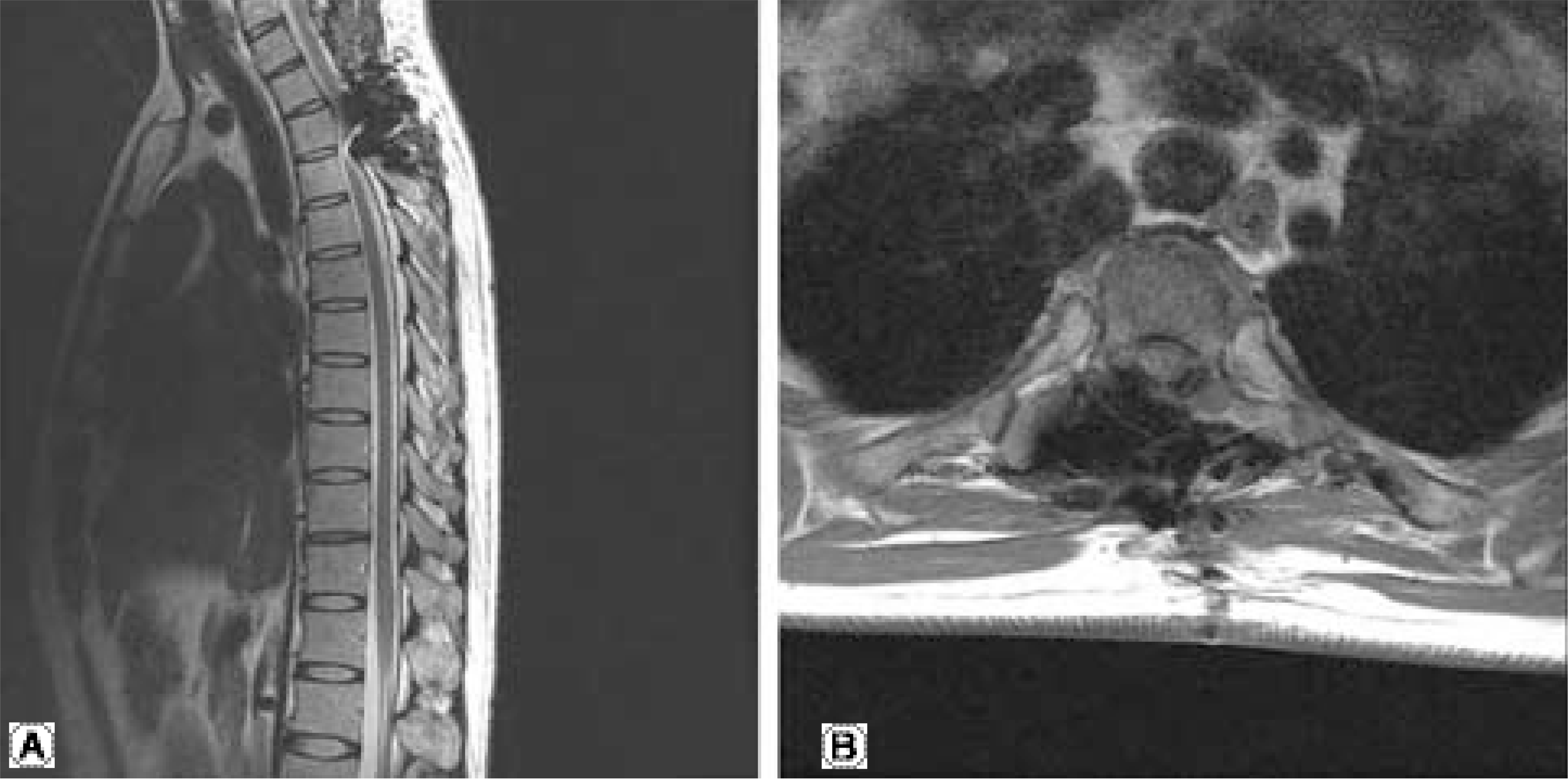Abstract
A mesenchymal chondrosarcoma is a rare malignant tumor occurring in both the bone and soft tissues, and has the characteristics of a malignant nature. Since its original description in 1959, several reports of this tumor occurring in the maxilla, mandible, rib and spine have been published. We report a case of a mesenchymal chondrosarcoma that occurred in the posterior part of C7, T1 and T2 and adjacent muscles in a 31-year-old man who was treated with a wide marginal excision.
REFERENCES
1). Lichtenstein L, Bernstein D. Unusual benign and malignant choroid tumor of bone-A survey of some mesenchmal cartilage tumors and malignant chondroblastic tumors, including a few multicentric ones as well as many atypical benign chondroblastoma and chondromyxoid fibromas. Cancer. 1959; 12:1142–1157.
2). Dahlin DC, Henderson ED. Mesenchymal chondrosar-coma: Further observations on a new entity. Cancer. 1986; 58:114.
3). Bertoni F, Picci P, Bacchini P, et al. Mesenchymal chondrosarcoma of bone and soft tissue. Cancer. 1983; 52:533–541.
4). Adegbite ABO, McQueen JD, Paine KWE, Rozdilsky B. Primary intracranial chondrosarcoma:A report of two cases. Neurosurgury. 1985; 17:490–494.
5). Bloch DM, Bragolia J, Collins DN, et al. Mesenchymal chondrosarcoma of the head and neck. J Laryngol Otol. 1979; 93:405.
6). Louvet C, de Gramont A, Krulik M, et al. Extraskeletal mesenchymal chondrosarcoma: Case report and review of literature. J Clin Onco. 1985; l3:858.
7). Alock R, Geeta C. Intraspinal mesenchymal chondrosarcoma. J Neurosurg. 1994; 80:928–930.
8). Russel DS, Rubinstein LJ. Pathology of Tumors of the Nervous System, 5th ed. 507–517. 1989.
9). Andrew R, Harwood. Mesenchymal Chondrosarcoma. Clin Orthop. 1981; 158:144–148.
10). Huvos AG, Rosen G, Dabska M, et al. Mesenchymal chondrosarcoma: A clinicopathological analysis of 35 patients with emphasis on treatment. Cancer. 1983; 51:1230–1237.
11). Matsuda Y, Sakayama K, Sugawara Y, et al. Mesenchymal chondrosarcoma treated with total en bloc spondylectomy for 2 consecutive lumbar vertebrae resulted in continuous disease-free survival for more than 5 years: case report. Spine. 2006; 15:E231–236.




 PDF
PDF ePub
ePub Citation
Citation Print
Print





 XML Download
XML Download